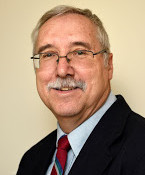[Opinion] EU Research Funds Wasted on Amnesty's Hollywood-Style CSI Adventure
[EXCERPTS]
In July 2015, amid great fanfare, including a media blitz and later a press-conference in Jerusalem, Amnesty International and the UK-based Forensic Architecture project launched their “Gaza Platform.” The stated objective was to shed “new light on violations of international law committed” in last summer’s bitter war.
This pseudo-scientific exercise repeated Amnesty’s standard political bias and was immediately exposed as factually inaccurate – terrorists were identified as civilian health care workers; a “journalist” doubled as a Hamas operative, etc.. The major investment in graphics and public relations not withstanding, the impact of the “Gaza forensics architecture project” was largely and justifiably non-existent. The claim that computerized maps and “eyewitness testimony” gathered by NGOs in Gaza could somehow determine whether war crimes were committed is clearly untenable. (Under international law, this would require examination of the intentions of Israeli military officials, and determining the presence or absence of Hamas terrorists and their weapons at the time and location of each attack. “Forensic architecture” can do neither.)
However, on one issue, the implications are significant – the amount of European taxpayer money that was wasted on this Hollywood-style exercise in pseudo-science. Apparently persuaded by buzz-words and the promise of hi-tech graphics, the EU framework known as the European Research Council (ERC) paid the bills. An initial grant of €1.2 million was provided for the 2011-2015 period to Eyal Weizman, the “principle investigator”. An additional €150,000 came from the ERC in 2014 for a “Media Aggregation and Plotting Platform” (MAPP), ostensibly to give human rights organizations “a highly efficient research and advocacy tool.”
The failed decision-making process will remain hidden until the European Parliament or some other independent body undertakes an investigation.
What is known is that officials in the ERC were somehow persuaded to fund Weizman’s forensic architecture. Perhaps these officials did not undertake the due diligence generally required in processes by which governments dispense taxpayer funds. If they had checked, they would have seen that Weizman is a long-time Israeli fringe activist who, prior to this project (and in its results), showed no expertise in the complex methodologies required for discerning details of modern asymmetric warfare against terrorists and of international law.
The money provided by the ERC for the Forensic Architecture project enabled him to advance this objective, and to hire a number of fellow long-standing and obsessive anti-Israel activists.
 Click for full article
Click for full article